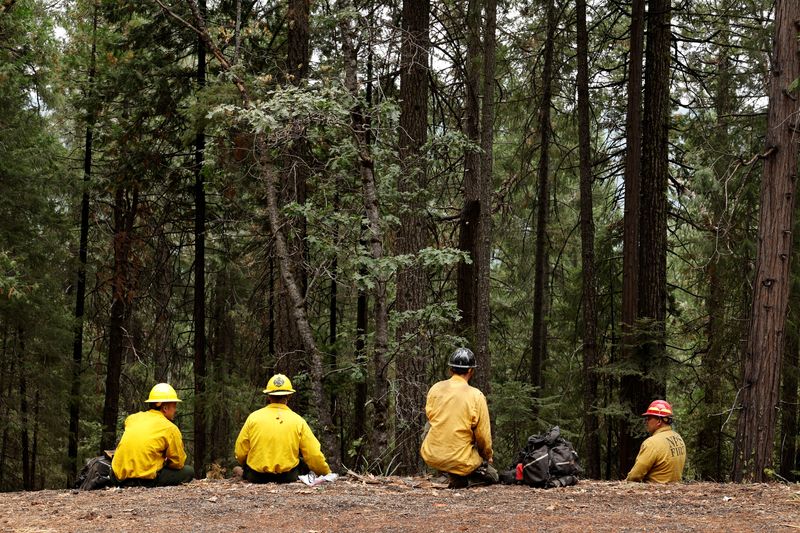By Wealthy McKay
(Reuters) – Greater than 6,000 firefighters in California’s Central Valley continued to battle the biggest blaze within the U.S. on Saturday, which burned its means into the historical past books because the state’s fourth largest conflagration on file.
There was barely a style of rain on Saturday from thunderstorms that introduced wind and rainfalls of zero to a tenth of an inch of precipitation, forecasters stated.
The 100-degree warmth together with winds as much as 25 mph or extra in some spots, provided little reduction to the firefighters, attempting to comprise the Park Hearth, scorching the wilderness terrain some 100 miles north of Sacramento, the state capital.
“We had some thunderstorms that just brought us down-drafts, that’s a problem,” stated Christopher Younger, a spokesman for California Division of Forestry and Hearth Safety, or Cal Hearth. “Lightning is a factor we worry about,” he stated.
Blazes from the Park Hearth, began by an alleged arsonist who pushed a flaming automobile down a 60-foot gully close to Chico, California, on July 24, has since burned extra 400,000 acres (162,200 hectares) or greater than 600 sq. miles, an space bigger than town of Los Angeles.
The 42-year-old man arrested hasn’t entered a plea as of Saturday, however was charged with arson and held with out bail, officers stated.
Greater than 560 properties and different constructions had been destroyed for the reason that blaze began 11 days in the past, feeding off of downed timber and tinder dry grass and brush. The hearth was 27 p.c contained on Saturday, officers stated.

The tough, wilderness terrain means it takes 2-to-3 hours to succeed in the hearth strains, officers stated. Some firefighters are being flown to the entrance strains by helicopters, some anticipated to remain there for days with provides additionally flown in.
The nationwide wildfire season has had an intense begin, elevating the danger of stretching fire-fighting assets too skinny. The middle has already requested assist from firefighters in Australia and New Zealand, who will arrive beginning Aug. 7 and deploy to Oregon and Washington.




